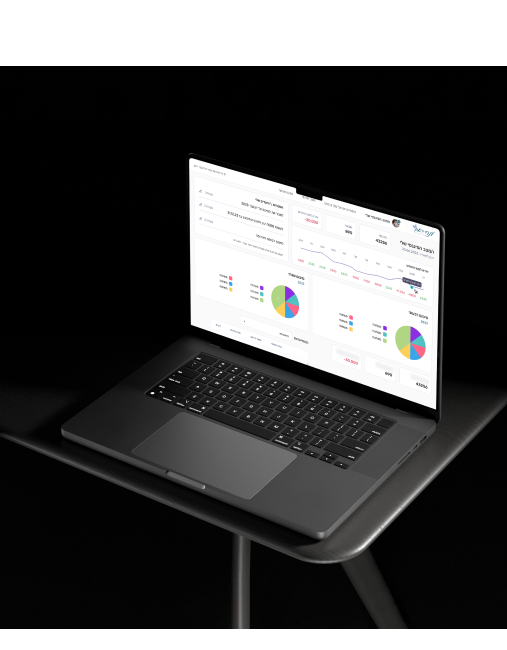Financial management dashboard
Financial Crisis Management Dashboard Characterization and Design

Overview
I led the characterization and design of a dashboard for a client in the financial sector. The client specializes in assisting families facing financial crises, providing methodologies for calculating expenses and income. The goal of the project was to create a user-friendly dashboard that streamlines the client’s processes, replacing the use of inaccessible Excel templates.
Role
My role involved conducting an initial characterization conversation with the client to understand the existing workflow, user needs, and challenges. Subsequently, I produced user flows, wireframes, and a full design of the dashboard in collaboration with the client and the developer. The emphasis was on simplifying complex processes and addressing the unique needs of personas using the dashboard.
Tools and Technologies Used

Figma played a central role in the design process, facilitating collaboration and visualization of the dashboard’s features.
Design and Development Process
Initial Characterization Conversation:
Explored the client’s existing workflow and challenges, discovering the reliance on inaccessible Excel templates.
Feature Prioritization and User Persona Definition:
Collaboratively identified the most important features, frequent use cases, and defined personas with specific needs. This laid the groundwork for design priorities.
User Flow Production:
Produced detailed user flows to illustrate the envisioned user journey for each defined feature. This step ensured precision and alignment with the client’s expectations.
Rough Design Wireframes:
Translated the user flows into rough design wireframes for client review and approval. This iterative process allowed for refining the design based on client feedback.
Full Dashboard Design:
Moved on to a full design of the dashboard after approval of wireframes, ensuring a visually appealing and user-friendly interface.
The developed website successfully reflects the rustic charm of boutique gardens while adhering to the client’s desire for minimalistic sales-oriented elements.
Developer Involvement:
Collaborated closely with the developer throughout the process, ensuring their active participation and understanding of required functionality. This decision proved critical in the project’s success.
Implementation
The dashboard design was seamlessly translated into development, with the client’s active involvement and the developer’s insights ensuring a successful execution of the envisioned functionalities.
Challenges Faced
Understanding the complex Excel documents used by the client was a significant challenge. This was addressed by fully involving the client in the process and emphasizing the critical nature of the situation.
Results
The financial crisis management dashboard successfully streamlined the client’s processes, providing a user-friendly alternative to the previously cumbersome Excel templates. The collaboration with the developer ensured the seamless integration of functionality.
Key Takeaways
Active client involvement and a collaborative approach with the developer were crucial in overcoming challenges and creating a dashboard that met the unique needs of the financial crisis management process.
Conclusion
The characterization and design of the financial crisis management dashboard exemplify my commitment to understanding client needs, simplifying complex processes, and fostering collaboration between design and development. This project not only provided an effective solution for the client but also highlighted the importance of empathy and precision in the design process.



